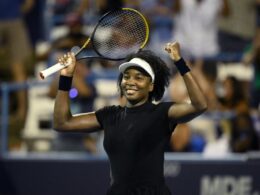Rick Carlisle had a grand plan.
His Indiana Pacers’ starting lineup had no answer for Mitchell Robinson, New York’s defensive anchor who came off the bench midway through Game 2 of the Eastern Conference Finals and — alongside perimeter pest Miles McBride — completely swung an early 10-point deficit into the Knicks’ favor.
Knicks head coach Tom Thibodeau rode Robinson from the 5:19 mark of the first quarter all the way until the 1:42 mark of the second period. Thibodeau turned back to Robinson at the 4:18 mark of the third quarter. Before he could get settled on Madison Square Garden’s hardwood floors, Carlisle countered.
Out came Myles Turner, Indiana’s vaunted floor-spacing five. In came Tony Bradley, a more traditional center on his fifth team in seven years. The glaring drop-off in pedigree between the two teams’ centers remains one of the biggest advantages the Knicks have on paper over their conference finals opponent.
But they don’t abuse the matchup. They don’t relentlessly seek Karl-Anthony Towns mismatches the way the Pacers hunt Towns switches in pick-and-roll action. And despite declaring the organization viewed Robinson as the starting center alongside Towns at the beginning of the season, the team hasn’t gone all-in on its secret weapon, even though it grows increasingly clear with every minute the “seven-foot demon” spends on the floor that New York’s best shot at winning a game, a series, or — better yet, a title — comes with him on the floor.
The time is now.
The Knicks starters entered Game 2 on Friday boasting a minus-68 net rating in the playoffs. The Pacers jumped out to a 19-9 lead in the opening minutes of the first quarter — before Robinson and McBride sparked a 10-0 run — then outscored the starting unit by eight points to start the second half.
It’s a difficult proposition to say the least, to abandon the five players who won 50 games, secured the East’s No. 3 seed, and gritted through the Detroit Pistons in Round 1 only to defy the odds and unseat the defending champion Boston Celtics in the Round 2.
But the Knicks have weathered one too many slow starts not to consider a change to the only common denominator in those early holes. The Knicks beat the Celtics by erasing two 20-point deficits and a 14-point deficit in the second round. They know they need to do better — that they need to show up ready to play from the opening tip, and not at the half — but there is a disconnect between what the players say and what actually transpires on the court.
But then come the schematic questions. Chief among them: Who goes to the bench if Robinson is bumped into the starting five? Amid a poor shooting slump in the preseason, Josh Hart volunteered to join the second unit. And even if you make that call — pull Hart and push Robinson — who is the next big man off the bench in case either gets in foul trouble? Precious Achiuwa’s minutes have been few, far-between and largely fruitless in the playoffs. And rookie Ariel Hukporti’s only playoff minutes came as the Celtics secured a blowout Game 3 victory at MSG.
“It’s hard to just look at it [the starters’ net rating] that way because there’s a lot of mixing and matching,” Thibodeau said ahead of tipoff on Friday. “So sometimes they’re with the second unit as well. So you look at everything. And then you have to also look at what happens when you put your second unit in.”
Therein lies another big difference between the Pacers and these Knicks. The Pacers are willing to turn to Bradley, who played a total of 17 minutes in the first and second rounds before Carlisle called his number for the first time all series on Friday. Indiana used 11 players in Game 2. The Knicks used eight.
“Not every player we have on our team is a perfect fit for exactly what we to do. But coaching is about taking some parts that aren’t necessarily identical and finding a way to bring out the strengths of those players to meld them with the rest and so we try to do that,” Carlisle said ahead of tip-off on Friday. “Every coach in the NBA is trying to do that, but I’ve resisted the whole notion, concept of being a ‘system coach’ for a long time. There’s so much player movement now. You’ve gotta have the attitude that you can take any players that are presented to you and try to do your best.”
It’s clear the Knicks are not starting their five best players. Now, after another disappointing playoff loss on their own home floor, they may have little choice but to shake things up.
Because only seven percent of teams to fall down 0-2 come back to win a series — and it’s clear the Knicks are a different team with Robinson on the floor.








